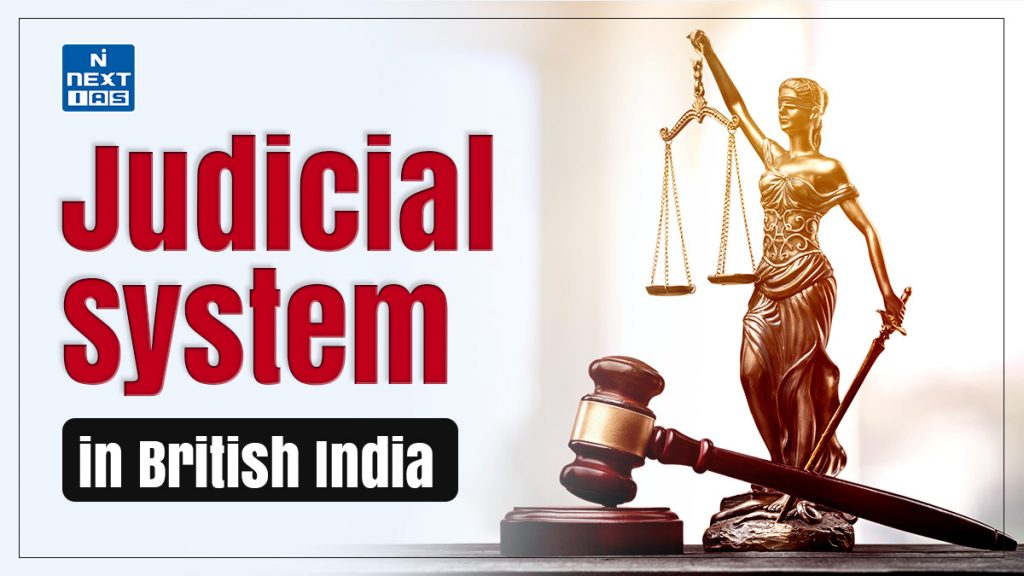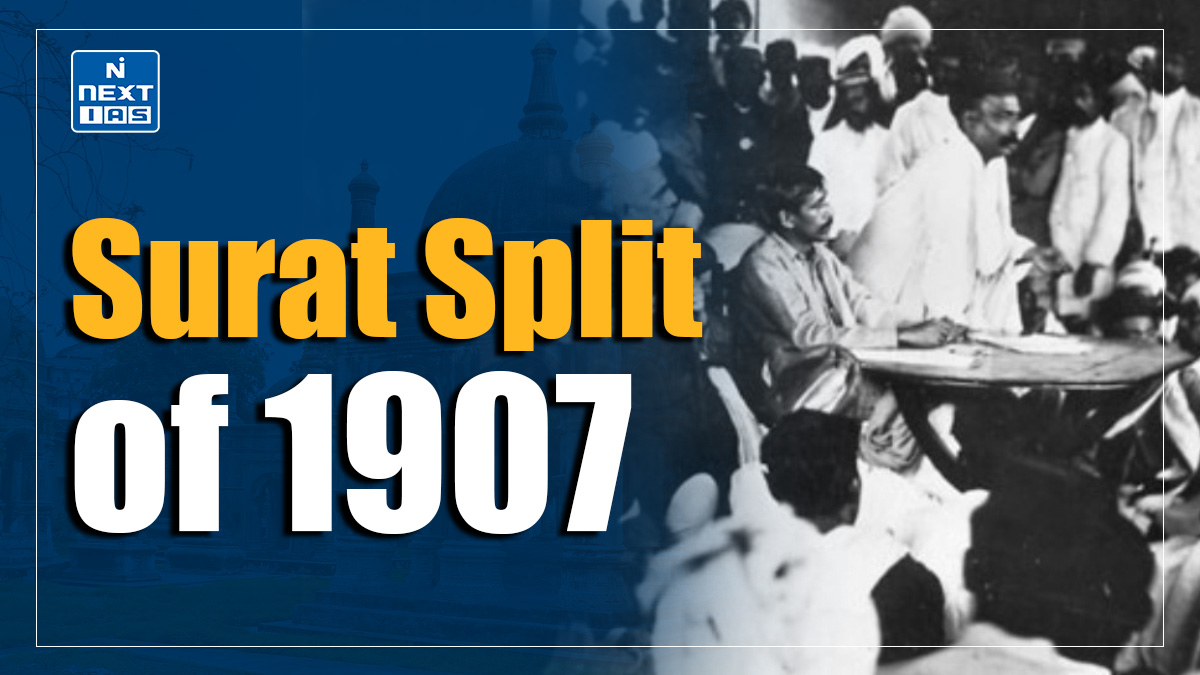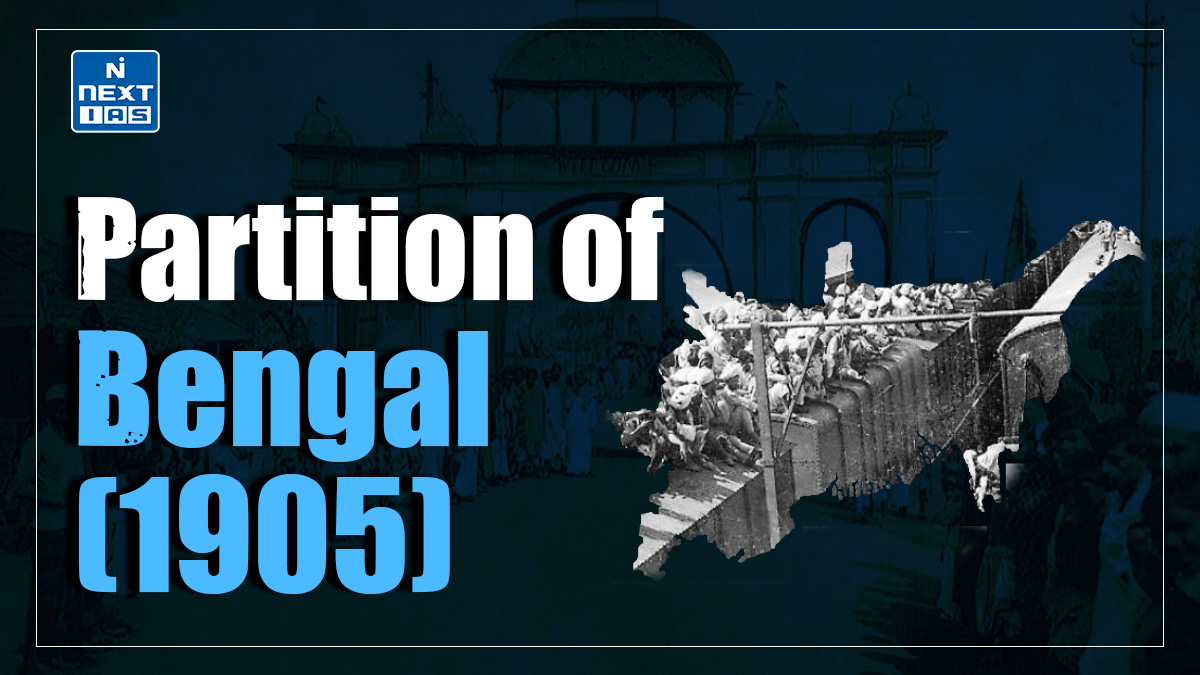
The Judicial System in British India underwent substantial transformation under colonial rule, beginning with early attempts to centralise legal authority and bring uniformity to the system. Initially influenced by indigenous practices, the British gradually introduced European judicial principles to assert control, create an efficient legal framework, and establish the East India Company’s sovereignty over Indian territories.
This article aims to study in detail the evolution, structure, and impact of the judicial system introduced by the British in India, analysing the phases of reform, the challenges within the system, and its long-term implications on Indian society and the judiciary.
About Judicial System in British India
- Between 1765 and 1772, justice was administered by Indian officers, and the process of dispensing justice was often arbitrary, as it depended to a large extent on the colonisers’ understanding and interpretation of the indigenous justice system.
Need for a Judicial System in British India
- The Mughal judicial system was never centrally organised and depended heavily on the local Faujdars and their executive discretion.
- This system focused more on the mutual resolution of a conflict than punitive justice (except in the case of rebellion), and punishment, when meted out, often depended on the status of the accused.
- People were perceived to be more driven by consideration for pecuniary benefits than justice, which led to complaints about the justice system’s “venality.”
- There is a need for direct or overt European supervision to ensure a centralisation of the judicial system to assert the company’s sovereignty.
Development of Judicial System in British India
Phase-1: Warren Hasting (1772-85)
- When Warren Hastings took charge as the Governor of Bengal in 1772, he attempted to take full control of the judicial system and devised a new system based on the Mughal model.
- The new system had two tiers: one at the districts and the other at Calcutta or Murshidabad (Appellate).
- There were two courts in the district: a civil court, Diwani Adalat, and a criminal court, Faujdari Adalat.
- The civil courts were to be presided over by the European District collectors, assisted by maulvis and Brahman pundits interpreting the indigenous laws for their understanding.
- The criminal courts were to be presided over by Indian officers of the Company, assisted by Kazis (qazis) and muftis. The European district collectors were vested with the power to supervise these courts.
- Muslim laws were to apply in criminal cases and Muslim or Hindu laws in civil cases, depending on the religion of the litigant.
- Appeals from the Faujdari Adalat were made to the Sadar Nizamat Adalat, presided over by Deputy Nizam and assisted by the Chief Qazi, the Chief Mufti, and three Maulvis. For a brief period (1772-1774, when its seat was at Calcutta), the President (Governor of Bengal) and council members presided over the court.
- Appeals from the Diwani Adalat could be made to the Sadar Diwani Adalat, which is presided over by the President and council members and has its seat in Calcutta.
- Under the Regulating Act of 1773, a Supreme Court was established at Calcutta. Initially, it acted as an appeal court. But very soon its jurisdiction clashed with other courts, which led to confinement of its authority to Calcutta and to matters related to factories dependent on Fort William.
- Later, in 1780, the Sardar Diwani Adalat was reconstituted as an appeal court, with Sir Elijah Impey, the Chief Justice of the Supreme Court, as its Superintendent.
Phase-2: Cornwallis (1786-93)
- Warren Hastings’s predecessor, Cornwallis, continued the process. He introduced a code, popularly known as Cornwallis’s Code of 1793, which separated revenue collection from the administration of civil justice.
- European subjects and government subjects were also brought under jurisdiction. They were answerable to the civil courts for their actions in their official capacity. The principle of sovereignty of law (the rule of law) was established.
- The Faujdari Adalats were abolished and replaced by courts of a circuit headed by European judges to act as courts of appeal for both civil and criminal cases.
- The new system provided a hierarchy of courts from Zillah (district) and city courts to four provincial courts and the Sadar Diwani Adalat with appellate jurisdiction.
- The Sardar Nizamat Adalat was brought back to Calcutta and placed directly under the supervision of the Governor-General and the members of the Supreme Council, assisted by the chief Qazi and the chief mufti.
Phase-3: 1828 onwards
- The Charter Act of 1833 opened judicial positions to Indians and provided for the appointment of a law commission to codify laws. As a result, a Civil Procedure Code(1859), an Indian Penal Code(1860), and a Criminal Procedure Code(1861) were prepared.
- The Four Circuit courts were abolished and the collectors had resumed magisterial authority and some judicial power.
- Persian had been the official judicial language until now. But hereafter, the suitor had the option to use Persian or a vernacular language, while in the Supreme Court, the English language replaced Persian.
- In 1865, three high courts were established at Calcutta, Bombay, and Madras. In 1866, the Allahabad High Court was established.
Critical Analysis of Judicial System in British India
In the Judicial system, there were elements of undeniable continuity. In most cases, the way Hindu personal laws were interpreted by Brahman pundits only benefited the conservative and feudal elements in Indian society. Only the public side of the law upheld the idea of freeing the individual from the shackles of status superiority. The concept of equality before the law often only applied to some Europeans. A racial privilege for the British rulers remained in various forms in the criminal courts.
Conclusion
While introducing structured courts and the rule of law, British judicial reforms in India were often shaped by racial biases and colonial priorities. Although they established a precedent for uniform laws, codified statutes, and an organized judiciary, the system largely served British interests, leaving a lasting impact on Indian society. This legacy, with its advantages and limitations, influenced post-independence judicial developments, underscoring both the strengths and critiques of colonial judicial practices in shaping India’s contemporary legal framework.
GS - 1





